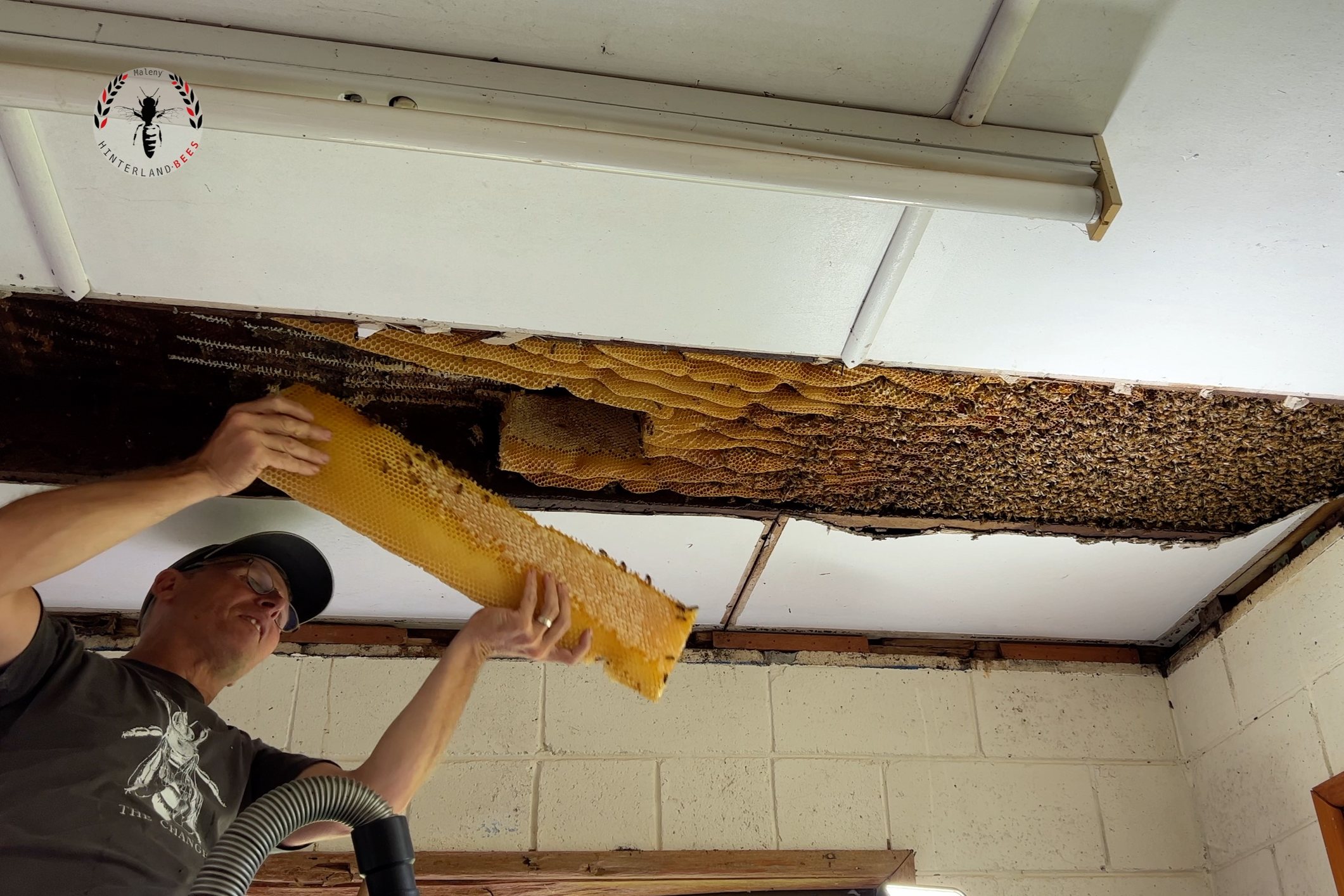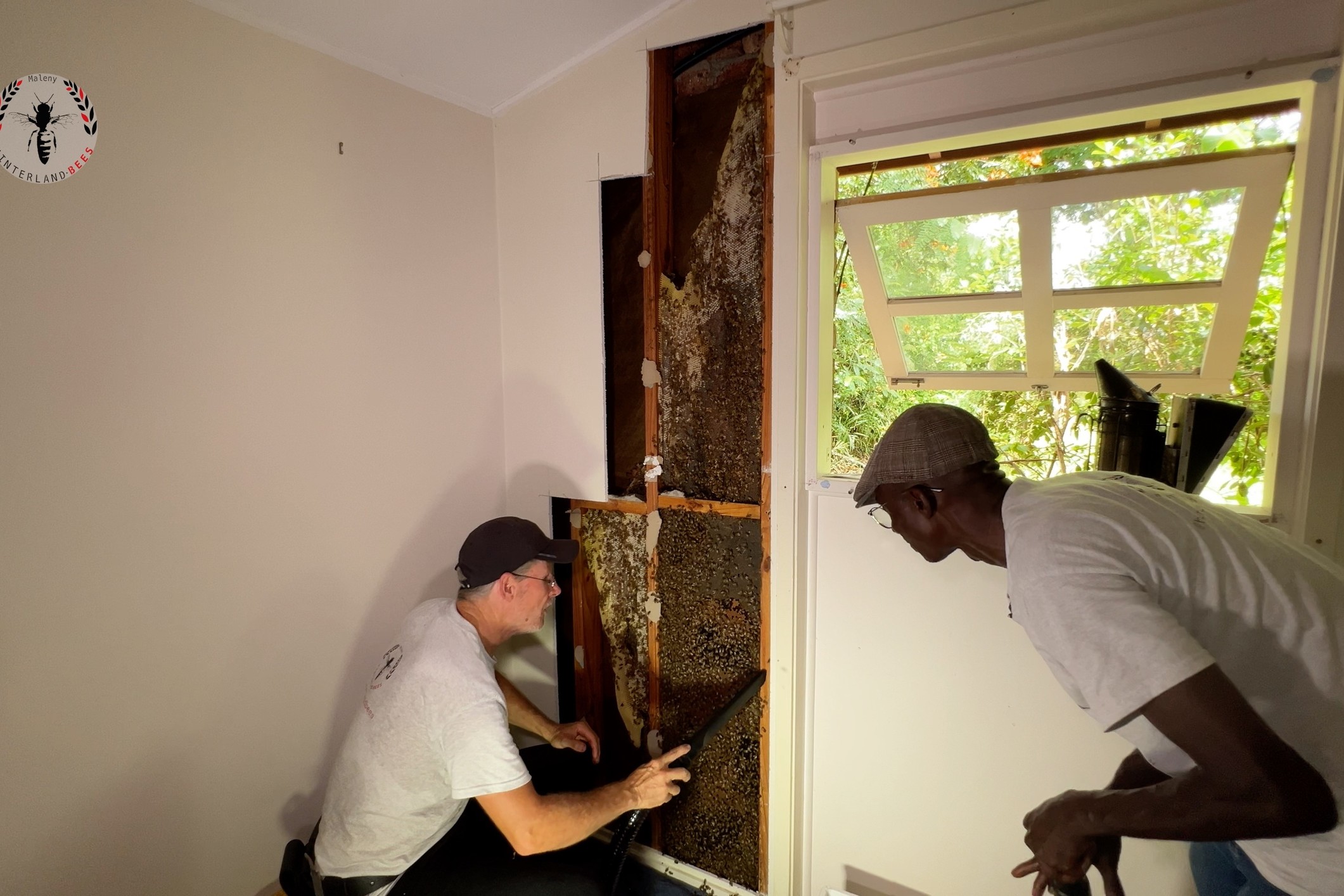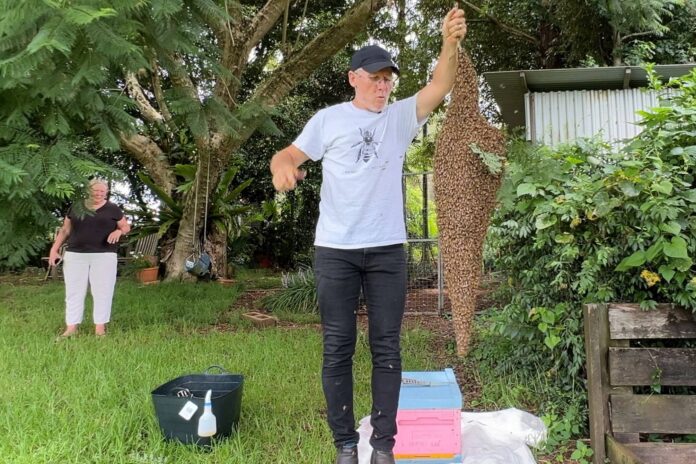A bee removalist has detailed how swarms are invading homes across the Sunshine Coast.
Scott Whitaker, of Hinterland Bees, has attracted millions of views on social media, where he can be seen handling huge clusters of bees without protective gear.
He has also shown hordes of bees within walls and ceilings of local homes.
A recent post on Instagram showed him extricating an estimated 100,000 of the critters from a cavity in a home near Maleny.
“Bees getting into houses is not uncommon,” he said.
“I remove two or three swarms a week, but that one was possibly the biggest population I’ve seen.”

Mr Whitaker said bee numbers usually peaked in spring, when there is plenty of nectar and pollen, and queens can go into “egg-laying overdrive”, but there was an unusual amount during a particularly wet summer and autumn.
“Worker bees only live for about six weeks because their wing muscles wear out: they work themselves to death,” he said.
“But when it’s raining, they’re not flying out and foraging as much, so they just hang out and the population balloons.
“That’s been quite stark this year. I’ve had to remove some mega-sized swarms.
“If the conditions are right, they can really grow in size.”
Mr Whitaker said people who call him for help are shocked at what is found.
“I haven’t come across a client yet who isn’t gob-smacked at what we find inside the wall once I open it up,” he said.
“What they see on the outside of the house is nothing in comparison to what is inside.
“They might see hundreds of bees coming and going from the house but there could be 40,000 to 50,000 bees inside the wall.”

He said swarms of bees enter homes to establish new colonies.
“When an existing colony sense there is lots of nectar and pollen coming in, the population starts to swell and a new queen hatches,” he said.
“The old queen leaves with half the population. They fly out, land not far away and form a huge ball. Those bees then look for a new place to move into: a cavity that’s generally about 70 litres in volume.
“The most common place they end up is in brick veneer houses: which most of the houses on the Coast are.
“They go into them through small holes that are easily defendable. Bees can go through a hole that is 4mm to 5mm.
“They also go into the space between the first and second levels of a house. It’s the perfect size.
“They start building their population and start going in and out to collect and store nectar and pollen.
“Sometimes they’re overlooked by people to the point where they don’t notice the bees for months, and then we get called in.”
He said he uses an infrared camera to find the bees, which regulate the temperature of the colony at 32.4 degrees Celsius.
“We then just open the wall or ceiling and use a special vacuum to suck up the bees,” he said.
“I can weigh the vacuum box to get an idea of the population of the bees.”
Mr Whitaker said honeycomb is put into beehive frames and into beehive boxes for potential honey production colonies, which represents the other side of the Hinterland Bees business.
“We monitor them (captured bees) for about a month to make sure they don’t have any diseases and after that we decide whether they will go into our apiary sites and make honey or whether we sell them to another beekeeper,” he said.
Mr Whitaker said people were “particularly fascinated” by bees.
“We get heaps of views on Instagram. One video (below) has about 80 million views,” he said.
View this post on Instagram
He said he was “constantly asked” why he does not wear protective clothing.
“Swarms are generally quite docile,” he said.
“Bees are not naturally aggressive (especially when they are not defending a nest).
“The bees are unlikely to want to sting anyone without provocation.
“If you know what you are doing and they are handled gently, they usually pose little risk. When approached with care, they typically respond with gentleness. It’s important to avoid causing them stress, as any squeezing or squashing may result in a sting.
“To mitigate the risk, I employ a small amount of smoke to mask their defensive pheromone, which could otherwise signal a threat to other bees and trigger additional stinging.”
But he said he does get stung.
“Being a beekeeper, I experience regular stings as part of the job,” he said.
“During certain bee removal assignments, I may not encounter any stings, while on other occasions, I might face multiple stings. If the number of stings becomes excessive, I’ll don protective equipment for added safety.”
Help keep independent and fair Sunshine Coast news coming by subscribing to our FREE daily news feed. All it requires is your name and email at the bottom of this article.





